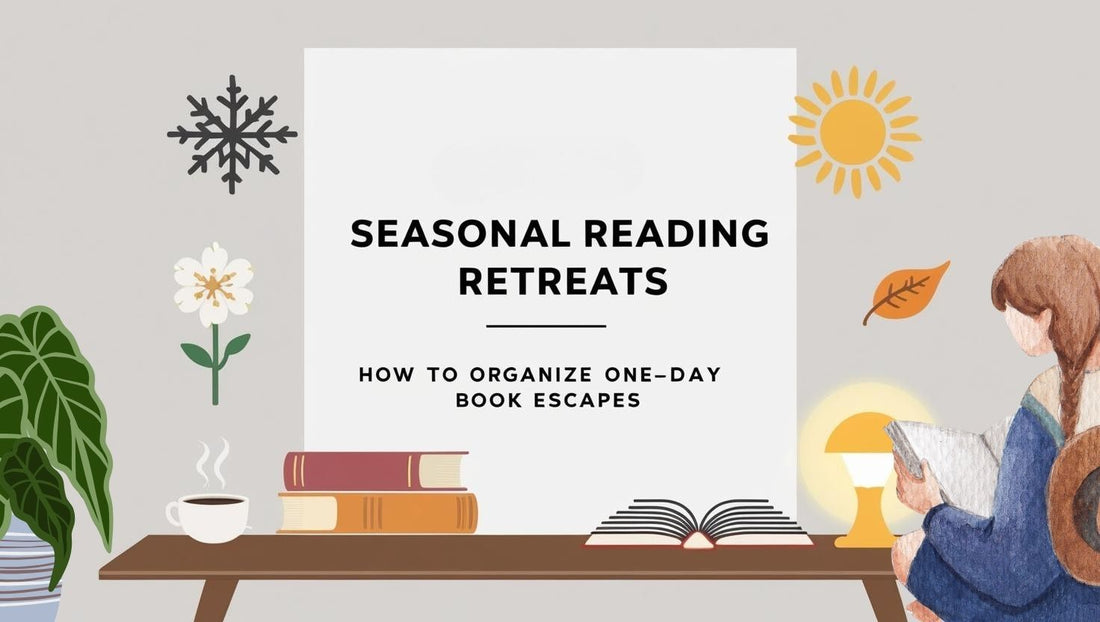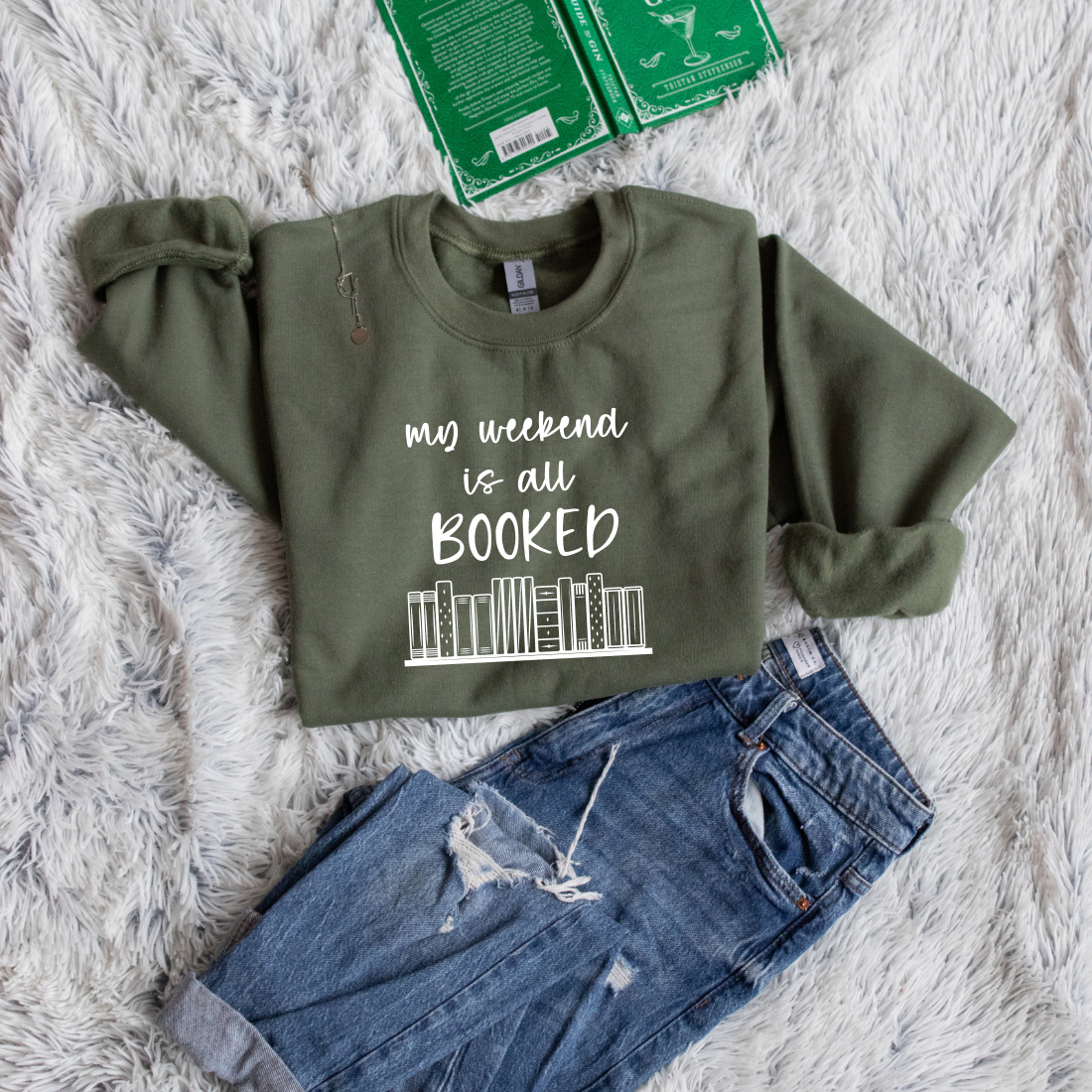
Seasonal Reading Retreats: How to Organize One-Day Book Escapes
Table of content
- 1. Key Takeaways
- 2. What is a Seasonal Reading Retreat?
- 3. Choosing the Right Season for Your Retreat
- 4. Picking the Perfect Location
- 5. Planning the Schedule for a One-Day Retreat
- 6. Matching Books with Seasons: What to Read
- 7. Bookish Add-Ons: Food, Music, and Decor
- 8. Inviting Others or Going Solo
- 9. Documenting the Experience
Key Takeaways
- Easy to Organize: A one-day reading retreat can fit into any season with simple planning.
- Tailored Themes: Choose books, decor, and snacks that match the season.
- Flexible Settings: Your retreat can be at home, in a park, or at a quiet local café.
- Mindful Moments: Schedule breaks for reflection and journaling to enhance your experience.
What is a Seasonal Reading Retreat?
A seasonal reading retreat is a one-day escape dedicated to immersive reading and quiet reflection. It is designed to offer a break from everyday routines and deepen your connection with a book for a short, focused period. This type of retreat is not about travel or elaborate events. Instead, it is about creating a comfortable space where you can enjoy your favorite reading material in sync with the season.
During a reading retreat, you set aside several uninterrupted hours to read, reflect, and even share insights with a close friend or book club. The retreat is timed to capture the mood of a season. For example, you might choose warm, comforting books for winter or light and refreshing stories for summer.
Key aspects of a seasonal reading retreat include:
- Focused Time: A clear schedule that allows you to dive deeply into a book.
- Thematic Environment: The setting, food, and activities all match the seasonal mood.
- Simple Setup: You do not need a professional event—your living room or backyard can work very well.
For more ideas on reducing stress through reading, check out Books That Help With Stress Relief and Relaxation and learn about the benefits of reading from Why Reading Reduces Stress.
You can use bullet lists like these to set clear retreat goals:
- Schedule uninterrupted reading time.
- Choose books that match the seasonal vibe.
- Prepare a simple snack or drink.
The retreat is meant to be enjoyable and quiet, offering a momentary break from busy schedules. It encourages mindful reading while taking advantage of the unique atmosphere each season brings.
Choosing the Right Season for Your Retreat
The season you pick for your reading retreat can set the tone for the entire day. Each time of year offers its own style and mood that can be reflected in both your reading choice and your surroundings.
Winter Retreats
- Vibe: Cozy, warm, and reflective.
- Book Ideas: Classics, mystery, or literature that pairs well with a hot drink.
- Settings: Near a fireplace or with soft blankets.
Spring Retreats
- Vibe: Refreshing and hopeful.
- Book Ideas: Stories with themes of rebirth, new beginnings, or nature.
- Settings: A sunlit room or a small garden nook.
Summer Retreats
- Vibe: Light and adventurous.
- Book Ideas: Escape stories, travel narratives, or fun fiction.
- Settings: Outdoor shaded areas like a park or a quiet balcony.
Autumn Retreats
- Vibe: Introspective and mellow.
- Book Ideas: Books with complex themes, historical narratives, or reflective memoirs.
- Settings: A cozy indoor setup with fall decor.
When choosing your season, consider how the weather and nature can enhance your reading mood. For more detailed book recommendations, visit Fall-Winter Book Recommendations and 10 Books Every Book Lover Should Read At Least Once.
Table: Seasonal Themes and Book Ideas
| Season | Mood | Book Ideas | Setting Ideas |
| Winter | Cozy & Reflective | Classics, Mysteries | Fireplace, comfortable nook |
| Spring | Fresh & Uplifting | Nature-themed, New Beginnings | Sunlit room, garden space |
| Summer | Light & Adventurous | Escape fiction, Travel stories | Outdoors, shaded area |
| Autumn | Introspective | Historical narratives, Memoirs | Cozy indoor with fall decor |
Choosing the right season not only boosts your mood but also enhances your focus, making your one-day retreat a memorable experience.
Picking the Perfect Location
Finding the right location for your reading retreat is key to a successful day of immersive reading. Whether you choose an indoor setting or an outdoor space, the goal is to create an environment that feels both comfortable and inspiring.
Indoor Locations
- Home Nook: Transform a corner of your home into a quiet reading space. Add a comfortable chair, soft lighting, and minimal distractions.
- Libraries: Many local libraries offer quiet rooms where you can sit undisturbed. This option also gives you access to additional books.
- Cafés: A small local café with a calm ambiance can work if you enjoy gentle background sounds.
Outdoor Locations
- Parks: Choose a park where you can spread a blanket under a tree. Nature sounds create a soothing environment.
- Gardens: A botanical garden or even your backyard can provide the fresh air and greenery that enhance your reading experience.
- Rooftops or Balconies: If privacy is a priority, a quiet rooftop or balcony might offer the solitude you need.
For home-based ideas on creating a cozy reading space, see 5 Ways to Make Your Home Feel Like a Book Haven. Also, check Reading Rituals That Help You Unwind and Focus for tips on setting a relaxing mood.
Here is a simple checklist for picking your location:
- Privacy: Ensure the location is quiet enough for concentration.
- Comfort: Have access to comfortable seating and a good view.
- Accessibility: Choose a place that is easy to reach and safe, especially if outdoors.
You might use a table to compare locations at a glance:
| Location Type | Advantages | Considerations |
| Home Nook | Complete control, privacy | May require setup changes |
| Library | Quiet, access to extra books | Limited hours |
| Café | Ambient sounds, social feel | Possible noise distractions |
| Park/Garden | Fresh air, natural scenery | Weather dependent |
Choosing the right spot sets the stage for your retreat. A carefully selected location helps reduce distractions, letting you focus entirely on your reading.
Planning the Schedule for a One-Day Retreat
A well-planned schedule is essential for a successful one-day reading retreat. The goal is to balance dedicated reading time with periods for rest and reflection. A structured day helps you stay engaged without feeling rushed.
Sample Schedule Outline
- Morning Session (9:00 AM – 11:00 AM):Start with a light breakfast and a warm drink. Settle into your chosen spot with your book and notes.
- Mid-Morning Break (11:00 AM – 11:30 AM):Take a short walk or do simple stretching. Jot down any initial thoughts or page highlights.
- Late Morning Reading (11:30 AM – 1:00 PM):Continue reading in a focused mode. Enjoy the quiet while the story unfolds.
- Lunch and Reflection (1:00 PM – 2:00 PM):Have a light lunch or snack. Use this time to reflect on the reading so far.
- Afternoon Session (2:00 PM – 4:00 PM):Deep dive into the book’s themes. Consider writing a brief summary or thoughts.
- Closing Session (4:00 PM – 5:00 PM):Wind down with a final quiet reading or discussion if in a group setting. Review the day’s insights and plan for future retreats.
For more ideas on managing your time, visit How to Find Time for Daily Reading in a Busy Life and Why Reading at Night Is Beneficial.
Key Tips for Scheduling
- Set Clear Start/Stop Times: Use a clock or planner to mark your sessions.
- Take Regular Breaks: Short breaks refresh your mind and prevent fatigue.
- Use Simple Reminders: A bullet journal or digital timer can keep you on track.
A simple list to check your schedule:
- Morning reading session
- Short breaks for stretching
- Lunch and reflection
- Afternoon deep dive
- Wind-down and review
By planning your day, you create a balanced experience. The clear structure helps you enter a state of deep concentration and better enjoy your book.
Matching Books with Seasons: What to Read
Your choice of books plays an important role in setting the tone of your retreat. Selecting reads that match the season can elevate your experience and connect you more deeply with the mood of the day.
Reading Suggestions by Season
- Winter Reads:Choose books that are warm and reflective. Classics or mystery novels work well with the idea of curling up by a warm light.
- Spring Reads:Opt for stories that symbolize new beginnings. Nature-themed or uplifting fiction reflects the season’s renewal.
- Summer Reads:Light fiction, adventures, or humorous narratives make a great escape on a sunny day.
- Autumn Reads:Look for literature that mirrors introspection and change. Historical novels or reflective memoirs suit the autumn vibe.
For deeper insights on new releases and popular series, check out The Most Anticipated Books of 2025 and explore The Top 5 Book Series to Dive Into Right Now.
Tips for Book Matching:
- Know the Mood: Pick a book that resonates with the natural environment around you.
- Plan a Variety: If you are in a group, consider a mix of genres to spark discussion.
- Use Lists: Create a reading list for each season. For example: Winter: Cozy mysteries, classic literature. Spring: Books on growth and change. Summer: Light fiction, travel adventures. Autumn: Reflective, deep narratives.
You might use a simple table:
| Season | Book Type | Example Ideas |
| Winter | Reflective, cozy novels | Classic mysteries |
| Spring | Uplifting, nature-themed | Nature-inspired fiction |
| Summer | Light, adventurous | Fun escapist reads |
| Autumn | Introspective, historical | Memoirs, historical novels |
Choosing the right book means matching your mood with the natural energy of the season. This thoughtful pairing turns a simple reading session into a holistic and memorable retreat.
Bookish Add-Ons: Food, Music, and Decor
A well-rounded retreat is not just about reading. Simple add-ons like snacks, music, and decorations can make your one-day escape more enjoyable and tie the theme together.
Food
- Seasonal Snacks:For summer, think refreshing fruits or iced beverages. For winter, consider warm soups or hot cocoa.
- Easy Preparations:Keep recipes simple with ingredients that are easy to find.
Music
- Background Tunes:Soft instrumental or lo-fi tracks can enhance focus. Check out Lo-Fi Reading Playlists on YouTube for ideas.
Decor
- Atmospheric Touches:Use items that reflect the season: a vase of fresh flowers in spring or autumn leaves in fall.
- Simple Arrangements:Keep tables and surfaces clean. A few well-placed items can create the perfect ambiance.
For more inspiration, you can read 10 Bookish Quotes That Capture the Magic of Reading and explore Fun Bookish Facts Every Book Lover Should Know.
Quick Ideas List
- Food: Seasonal fruit platter, themed cookies, or a simple sandwich.
- Music: Create a playlist that fits the season’s mood, like soft jazz for winter or upbeat acoustic for summer.
- Decor: Use minimal decor such as a small vase, simple tablecloths, and natural elements.
Additionally, check out Seasonal Book Recipe Ideas on Pinterest for creative snack ideas.
These add-ons help create a multi-sensory reading retreat that enriches your experience. They are simple but effective ways to make the day feel special and connected with the season.
Inviting Others or Going Solo
Deciding between a group retreat and a solo reading day depends on your mood and personal preference. Both options have unique benefits and can be planned with the same care.
Group Retreats
- Social Connection:Reading with a friend or book club member can spark interesting discussions. Consider setting up a post-reading discussion session.
- Shared Planning:Collaborate on snack ideas, music playlists, and decor choices.
For group ideas and planning tips, visit How to Find Reading Buddies in the Digital Space and Guide to Starting a Book Club With Friends.
Solo Retreats
- Personal Focus:A solo retreat gives you the space to fully absorb the book without interruptions. Use this time for journaling thoughts, ideas, and personal reflections.
- Flexible Schedule:You have the freedom to modify your schedule as needed. Enjoy reading, then take pauses whenever you want.
Benefits Comparison
- Group Retreat: Encourages discussion and shared insights. Provides external motivation and accountability.
- Solo Retreat: Enhances self-reflection. Allows complete control over the environment.
Bullet Point Checklist for Planning:
- Decide on a group size or choose to be alone.
- Set up a clear schedule that works for everyone (or yourself).
- Prepare discussion questions if meeting in a group.
- Choose an environment that accommodates your choice.
Both group and solo retreats create valuable reading experiences. Choose what best fits your current mood or try both on different days to see what works best.
Documenting the Experience
Documenting your reading retreat can help you track your thoughts, reflect on your progress, and create memories. Keeping a record of your day adds a creative layer to your retreat.
Journaling
- Write Reflections:Note what you read, how it made you feel, and any ideas it sparked. Use prompts such as “What surprised me today?” or “Which part of the book touched me?”
- Bullet Points & Tables:Create simple lists to capture your favorite quotes or chapter summaries.
Photography and Scrapbooking
- Photo Logs:Take pictures of your reading spot, snacks, and any interesting details. Create a digital or physical scrapbook of your retreat day..
- Examples of What to Capture:The setup of your reading nook. Close-ups of your book and any notes taken. Decor elements that match the season.
For more ideas on setting goals and tracking progress, refer to How to Achieve Your 2025 Reading Goals and How to Create a Personalized Book Gift Box.
Creating a Simple Table for Your Reflections
Time Activity Key Reflection 9:00 AM Morning Reading Engaged with the book introduction 1:00 PM Lunch & Reflection Thought about character development 4:00 PM Evening Session Jotted down final thoughts.
Benefits of Documenting
- Record Memories: A saved record of your retreat can encourage future planning.
- Review Progress: Look back on your entries to see how your reading habits and preferences evolve.
- Share with Others: You might share your notes with a friend or in a book club discussion.
Documenting your retreat ensures the experience lives on. It can be a valuable tool for reflection and a creative outlet that adds another layer to your reading journey.
Can I organize a seasonal reading retreat at home?
Yes. A quiet corner with comfortable seating, simple snacks, and scheduled breaks is enough to create a successful retreat.
How long should a reading retreat last?
One day works best. A balanced schedule of 4–8 hours with regular breaks is ideal.
Should I invite others or keep it solo?
Both options are great. Group retreats allow for discussion, while solo retreats give you complete focus on the text.
What types of books work best for these retreats?
Choose books that match the season’s mood—cozy novels for winter, uplifting reads for spring, light stories for summer, and reflective narratives for autumn.
How can I document my retreat experience?
Consider keeping a journal, taking photos, or making a digital scrapbook to capture your thoughts and memories.







